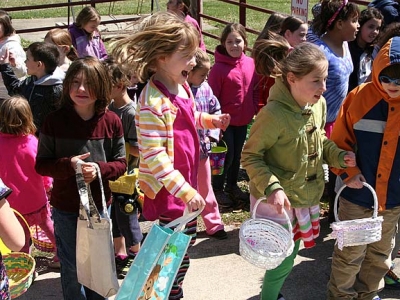Glen likely to be preserved
- Published: April 17, 2008
Negotiations about the fate of Antioch College this year have raised questions about the state of the assets associated with it, including Glen Helen. Questions such as what will happen to the land and the Glen’s education programs and who will ultimately lead the organization are still unclear, but the Glen’s leaders and supporters have initiated measures to ensure that whatever the future, the Glen will remain a nature preserve to be used and enjoyed by the community.
The Glen has always been operated by the college, and in recent years the college has provided about 4 percent, or $35,000, of its total annual budget of $750,000, according to Glen Helen Ecology Institute Director Nick Boutis. Antioch University leaders have said, according to Boutis, that if the college closes in June 2008, the university would assume direct control of the Glen with the understanding that by the beginning of the next fiscal year this July, the Glen will be fiscally independent.
“The university administration has been very consistent in saying that the protection of the Glen would continue, the Glen’s programs would continue and support for the Glen would continue, but that at the start of the fiscal year, we’ll be responsible for being fully self-sustaining,” Boutis said last week.
In addition to funding, the college has traditionally provided business services for the Glen such as check writing and payroll services, which Boutis hopes the university will continue, he said.
University CFO Tom Faecke and Chancellor Toni Murdock did not return calls regarding the Glen, and College Interim President Andrzej Bloch declined to comment due to a public information embargo that both the university and the Antioch College Continuation Corporation agreed upon last week as they continued to negotiate the transfer of ownership of the college from the university to the ACCC. But Lynda Sirk, communications director at the university, said that when the college closes, the contracts with Glen employees will also need to be suspended and shifted over to the university.
“The Glen is owned and operated by the university, and the Glen will remain a resource to the community even if the college is suspended for awhile,” Sirk said.
The Glen has not articulated a detailed plan for making up the lost revenue from the college, but Boutis indicated the Glen would need to scrutinize its budget and consider a combination of three options, including making budget cuts, appealing to individual and corporate donors and increasing program fees. A friend of the Glen put the revenue loss into perspective, Boutis said, by describing that in order to yield $35,000 a year, the Glen would need an endowment fund of $700,000.
“That’s a pretty good assessment of how much we’ll need in order not to fall behind,” he said.
The land is protected, sort of
When Hugh Taylor Birch donated the first 1,000 acres of the Glen beginning in 1929, he drafted a poetic agreement gifting the land to the college. In memory of his daughter, Helen Birch Bartlett, the Glen was deeded to the college for the study, exploration, recreation and use of the college and its successors, the deed reads.
In response, the college drafted an acceptance agreement stating that it would use the Glen as a preserve, laboratory, park and campus for the “undertaking of such other things and activities as may be acceptable and appropriate to the uses and purposes of Antioch College and its successors.”
According to the document, the college added a clause agreeing to protect the property against any charge or lien and made provisions in the event that the college or its successors ceased to exist, that the property should be passed on as a state preserve.
Following those gifts, in the 1960s, the Country Commons easements were established on dozens of properties bordering the Glen and connecting the preserved area to a green belt around the village. The easements were an ingenious idea at the time, according to Krista Magaw, director of the Tecumseh Land Trust, with the component that adjacent landowners agreed to protect each other’s land from being developed.
But since that time, land protection law has become more sophisticated and the language governing it more definitive, Magaw said, so that the older easements are less effective than they were perhaps meant to be.
The Glen’s stewards have been aware of the precariousness of their outdated easement, and in 2004 leaders from the university, the Glen and the Tecumseh Land Trust attempted to purchase a $1 million permanent conservation easement for the 1,000-acre Glen with funding from the Ohio EPA Water Resource Restoration Sponsorship program. The application was trumped by another project by a fraction of a point, according to Magaw, who feels that if they applied again, especially given the uncertainty with the college, the Glen would be a high-priority candidate and would have a good chance of getting funded.
“We met with the Glen and the university eight months after the announcement about the college’s closure was made, and we were encouraged that they were still interested in doing it,” Magaw said.
As for the 100 or so acres of Country Commons land owned by the college, TLT also recommends putting modern conservation easements to ensure they remain open space in perpetuity. The land trust is in the process of helping many of the other Country Commons easement holders around the village, many of whom are interested in protecting their property as green space for the future, Magaw said.
The Yellow Springs News encourages respectful discussion of this article.
You must login to post a comment.
Don't have a login? Register for a free YSNews.com account.














No comments yet for this article.